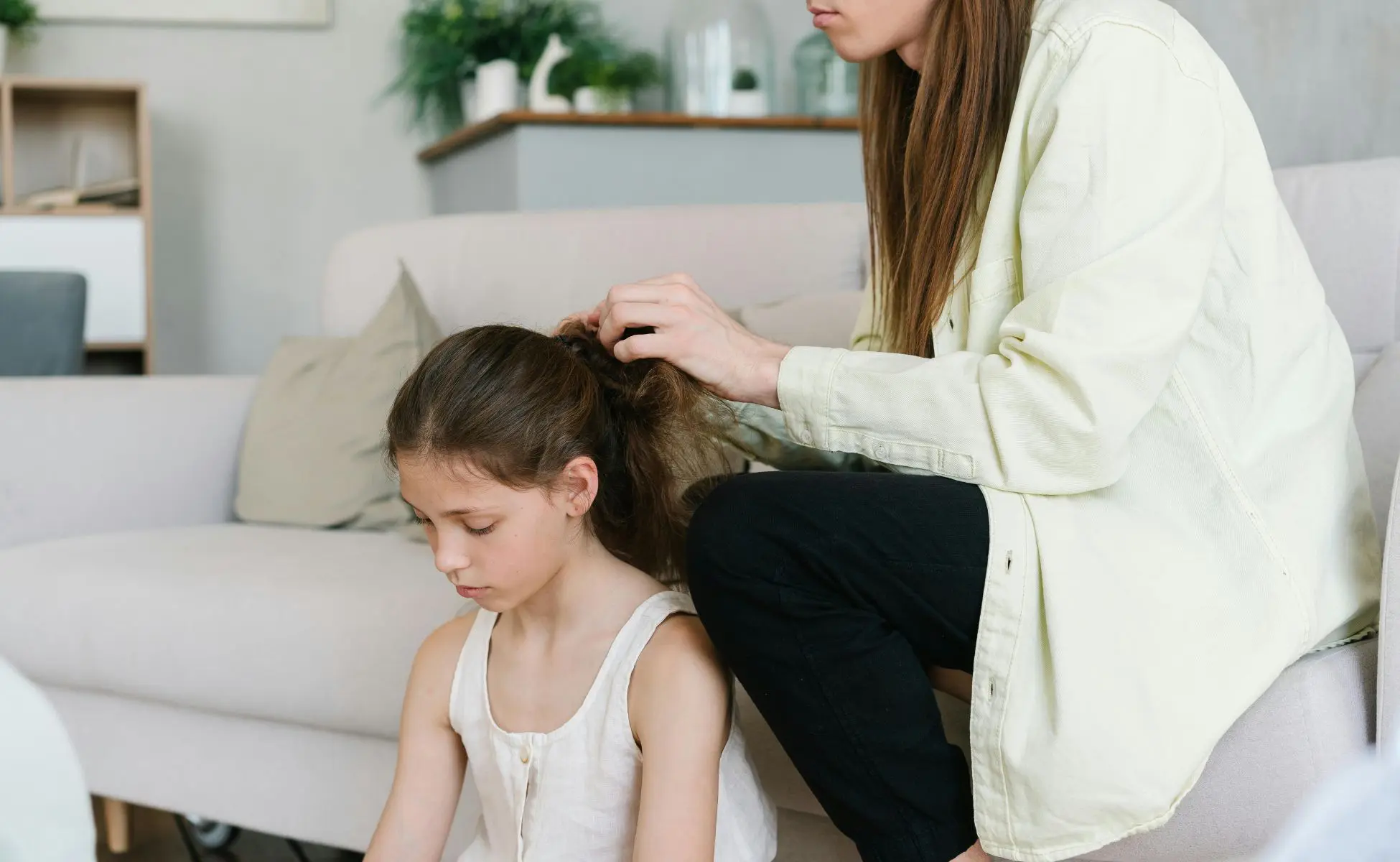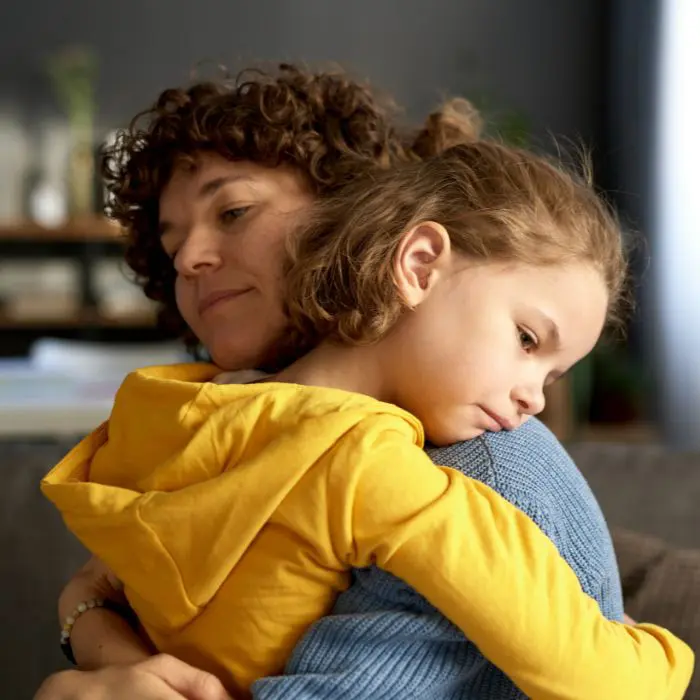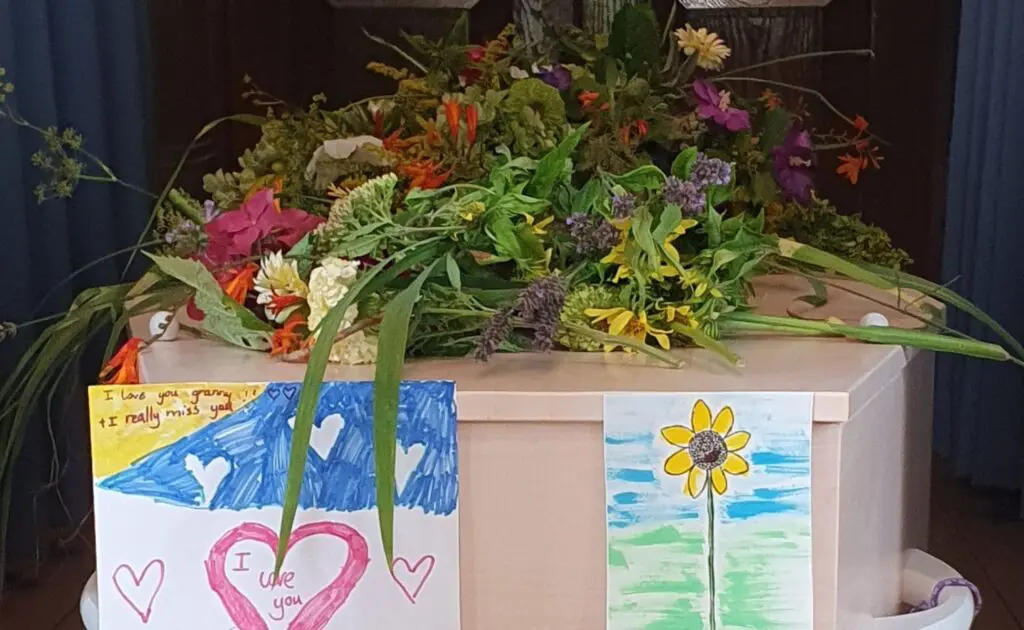How to support a child with funerals and cremations

The involvement of children and young people in funerals and other rituals following a death will, of course, vary in each family depending on their cultural and religious beliefs, but it can help children if they can understand what will happen at the event rather than let their imaginations fill in the blanks.
Ways to explain a funeral to children and young people
It helps to give your child enough information about the funeral so that they can decide whether they want to attend or not. Here are some examples of what you might say:
“When someone dies, we have a special service called a funeral. The service is often held in a special place (church, chapel, synagogue or mosque) and is a time for people to say goodbye to the person who has died and to be with their family.”
“At the funeral, there might be songs and prayers and people saying what they remember about the person who has died.”
“On Thursday we’re having dad’s funeral. His body will be there in a special box called a coffin and many of dad’s family and friends will be there. Some of them may be very upset and may be crying. After the funeral, dad’s body in the coffin will be buried under the ground or cremated which means dad’s body will be turned into ashes. Would you like to go to dad’s funeral?”
From conversations with bereaved children and young people we have supported at Winston’s Wish, we know that they value the chance to choose whether or not to attend the funeral.
Give them lots of information about the funeral or event
To help a child or young person decide whether or not to attend a funeral make sure you talk to them about what is involved. Give them clear and detailed information about what will happen; this will involve explanations about the difference between, for example, burials and cremations.
If it fits with your own beliefs, it will help if the child has had some preparation about the difference between the body of the person and the part that made them who they were. Some people call this a soul, or a spirit, or love, or ‘what was special about the person’ or ‘what we will remember about them.’
Offer clear and detailed explanations of what to expect from people at the funeral. Some children can be shocked that people seem to have a party after someone has died; others are upset when people say, ‘How lovely to see you’. Explain that this doesn’t mean that these people are happy that the person has died – they’re just the sort of things that adults say. Equally, seeing adults in deep distress may alarm children but preparation beforehand will help them understand that his is a reasonable response to the huge thing that has happened. Prepare them for some of the things that adults may say to them. For example, boys may be told that they are the ‘man of the house now’ and they will need to know that they are not.
Give them plenty of reassurance
Let them know that they can change their minds at any time. Check that they are happy with the choice they’ve made, but not too often because children want to please and may say what they think you want them to say. Give plenty of reassurance that they can still be involved and participate in saying ‘goodbye’ even if they choose not to attend and that they won’t be criticised if they don’t go to the funeral.
It can also me important to give the child reassurance that the person who has died can no longer feel anything, so they will not feel the flames, nor will they be scared about being buried. Reassure them that every part of the body of the person who has died is being buried or cremated. Some younger children are confused and wonder what happens to the head, arms and legs.
Should children attend a funeral?
Some families believe that children should not attend a funeral. However, it can help them to begin to accept the reality of the death and also to be less scared. Children are usually more scared about what they don’t know than what they are allowed to be part of as this enables them to feel more included.
From conversations with bereaved children and young people we have supported at Winston’s Wish, we know that they value the chance to choose. We have spoken to many children who are really pleased that they were able to attend the funeral, and we have spoken to many others who did not go and later deeply regretted it. In order to make a sensible choice about going or not, they need to know what is involved.
How children and young people experience grief
Children experience grief differently from adults. For adults, it feels like having to wade through rivers of grief, and they may get stuck in the middle of a wide sea of grieving. For children, their grieving can seem more like leaping in an out of puddles. First reactions may range from great distress to seeming not to be interested. One minute, they may be sobbing, the next they are asking ‘What’s for tea?’ It does not mean they care any the less about what has happened.

There are lots of reasons for a child to attend the funeral or event. It may allow them to:
- begin to say goodbye
- begin to accept the reality and finality of the death
- begin to understand what has happened
- be less scared
- feel part of what is happening
- share memories with others
Probably the biggest factor that will affect a younger child’s attendance at a funeral is if they feel their presence is welcome there. If there is going to be tension (as opposed to sadness) they will pick this up and feel more distressed by the atmosphere than by what is happening. Many children understand and appreciate sharing in other people’s sadness – after all that is what they are feeling too. It’s your family and you know them best.
Make arrangements for the day
Have someone with whom the child feels secure to act as their supporter for the funeral. This may be an aunt or uncle or one of your best friends. This allows you to be fully present at the funeral for your own sake.
Create opportunities to be involved. This may be in the planning of the funeral service. It may be through saying or reading or writing something about the person who has died. It may be through choosing a particular piece of music. They may wish for something special to be put in the coffin, for example, a picture or something linked to a memory.
If children can’t attend the funeral
If it will not be possible or appropriate for your children to attend the funeral, for whatever reason, there are other positive ways in which they can be involved.
Perhaps they could be involved in the planning of the funeral, choosing a particular piece of music to be played or poem to be read. They may wish for something to be put in the coffin, for example, a picture or card. Sometimes a child might choose two identical objects, such a soft toy, send one to be put into the coffin and keep one for themselves.
If the funeral happened a while ago and your children regret not attending, it is never too late to have a memorial or other ceremony that includes them saying goodbye. This could be visiting the grave or a special place, holding a ceremony or lighting candles. You’ll find some other ideas for ways to remember someone who has died here.
Should children view the body of a loved one?
The decision to view the body of a loved one who has died is a very personal choice for adults, and it is the same for children. The important thing is that a child or young person is given the choice and that this is an informed choice – they need to understand what viewing the body will mean.
Adults often worry that children will be left with the image of a person’s body and that it will be scary. Preparation is the key. Often a child’s imagination about what someone will look like after they have died is worse than the reality, so if children have clarity they often can manage this very well. It can also help young children to understand the permanence of the death of a loved one as they are able to see the physical body. You can read about explaining death to a child here.
Being left with the image of a person’s body doesn’t have to be negative, and we encourage conversations both about what the person looked like after they died and about what they were like when they were alive. This balance is important for children to be able to carry the positive memories alongside their grief and loss.
How to prepare children and young people to view the body of a loved one
If the child decides they do want to see the body, then there are some important things you can do to help to prepare them.
- Make sure the child has understood that the person has died. It is important for children to have understood that the person has died. If a child is asked, “Do you want to go and see Uncle Jack?” then they will, of course, say that they do, as they will not understand that it is a body and that they are no longer alive. If the conversations have already taken place about the person’s body not working anymore and that they have died, it makes the conversation about viewing a body easier for your child to understand.
- Explain how the person’s body might be different. Explaining that the person’s body may look and feel different is also very important. You could explain that the person’s heart isn’t working anymore, and therefore their blood isn’t being pumped around the body so they will look pale. This also means that their skin will be cold to touch. Explain that although their eyes will be closed, they are not asleep. Be very clear that when we are alive and go to sleep, our hearts still beat and we still breathe, but the person who has died is no longer breathing and their heart is no longer beating.
- Describe what they might see. Be clear about how the body might be presented, for example, “Mummy will be lying in a wooden box called a coffin. The lid will be open so we will be able to see her body and she will be dressed in the outfit that you helped to choose.” Describing the room that the person who has died will be in, is also important. If possible, take them to the room before the body is there so they can get a sense of what it will be like. Speak to the undertakers as often they can accommodate visits to the room beforehand.
- Make sure they understand it is their decision. Explain that they can stand at the door and look from afar, or they can go close and touch the person – it is their choice. Remind them that they can leave at any moment and that they can change their mind at any point. Make sure to reassure them that there is no right or wrong way, and if they choose not to go that does not mean that they didn’t love the person who has died. This is especially important when there are siblings, some who want to view the body and some don’t.
Helping the child make the decision
It is important to explain to the child or young person that if they do see the body of their person, it will be the last time they see them. After seeing the body from the last time, instead of seeing them again, they can remember their person through photos, memories, writing, and in their own mind. Making the child or young person aware of this does not intend to put pressure on the child or young person to decide about viewing the body, but to help them to understand that after the funeral, cremation, or service, the body will be gone.

Seven creative ways to involve children and young people in a funeral

Independent Funeral Directors, Poppy’s, share seven creative ways that children and young people can be involved in funerals.
There are so many different age-appropriate ways for children and young people to express their grief and say goodbye to someone they care for – before, during and after the funeral ceremony. In sharing our experience and practical advice here, we hope to inspire your own ideas.
How to get support
Our team of bereavement specialists are available to speak with right away. No appointments or waiting lists, just real-life grief support. Call us on 08088 020 021 (open 8am-8pm, weekdays), email ask@winstonswish.org, use our online chat (open 8am-8pm, weekdays) or text or WhatsApp us on 07418 341 800 (open 8am-8pm, weekdays). You must be 13 or older to receive support via WhatsApp.
For out of hours mental health support, text WW to 85258 to speak with someone from our trusted partner, Shout. For urgent support in a crisis, please call 999.

Connect with us
Sign up to our newsletter and follow us on social media for all our latest news and advice on supporting grieving children and young people.

